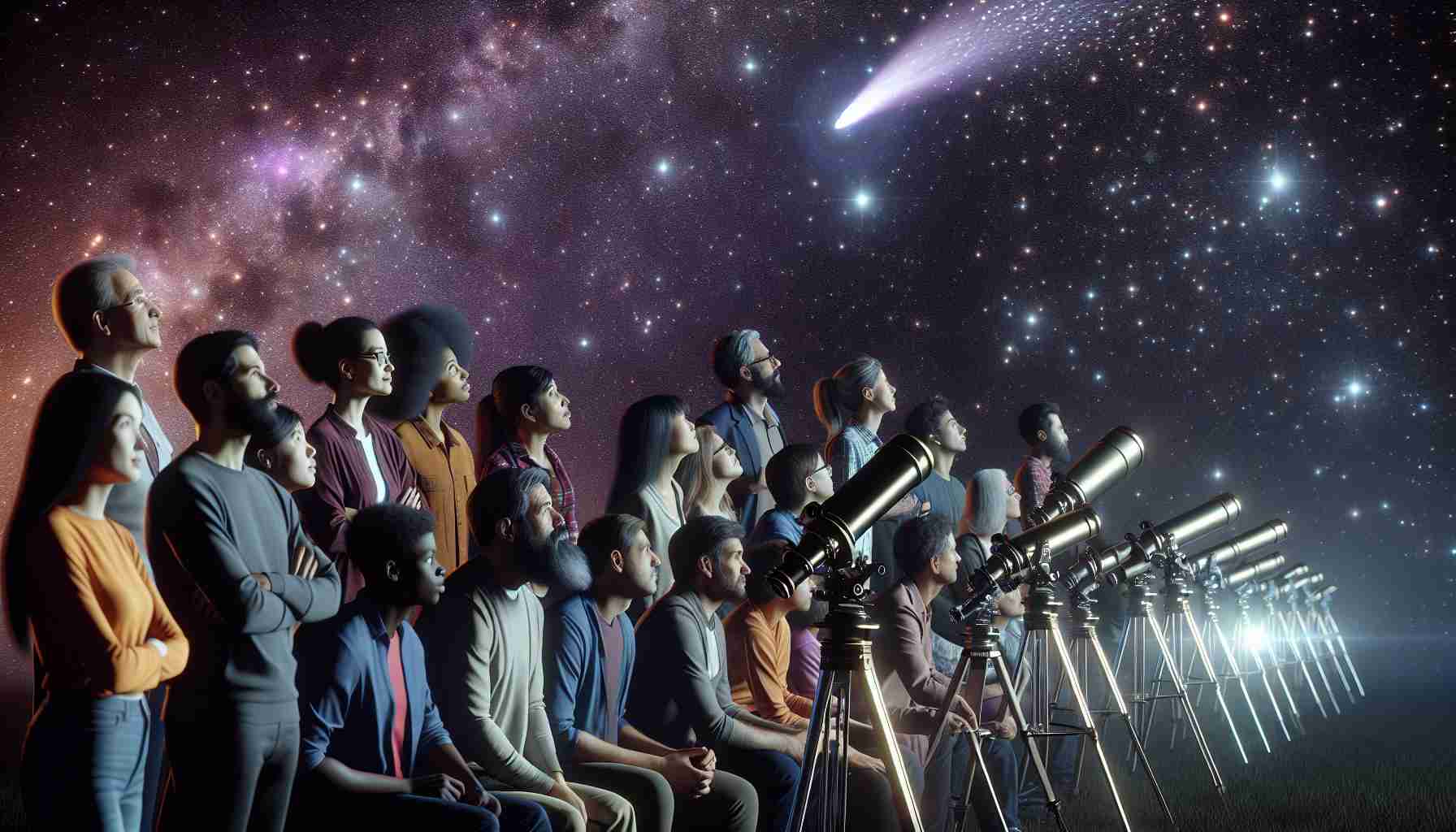A breathtaking celestial event unfolded before the eyes of residents across various regions in Greece on the night of last Saturday. It was an encounter with Comet C/2023 A3 (Tsuchimikado-ATLAS) as it approached Earth on October 12, 2024. The comet’s presence graced the skies above Mytilene, Larissa, Evia, Kilkis, as well as Agrinio and Attica.
Experts explain that this comet originates from the Oort Cloud and was first discovered by the Purple Mountain Observatory in China on January 9, 2023. Passing perihelion at a distance of 0.39 astronomical units (58 million kilometers) on September 27, 2024, the comet made its close approach to our planet.
The Oort Cloud, situated in the outer solar system, is composed of icy objects predominantly made of water, ammonia, and methane. Many comets are believed to begin their journey towards the Sun from this region due to gravitational forces acting upon them, as stated by the National Observatory of Athens.
Stargazers Mesmerized by Rare Celestial Visitor
The recent sighting of Comet C/2023 A3 (Tsuchimikado-ATLAS) in Greece has left astronomers and sky enthusiasts in awe with its dazzling display. As this remarkable comet made its journey closer to Earth on October 12, 2024, it provided a stunning visual spectacle for observers in Mytilene, Larissa, Evia, Kilkis, Agrinio, and Attica.
What are some key questions arising from this celestial event?
– What makes Comet C/2023 A3 (Tsuchimikado-ATLAS) unique?
– Comet C/2023 A3 is a rare visitor from the Oort Cloud, a distant region in the outer solar system.
– How does the composition of comets shed light on their origins?
– Comets such as C/2023 A3 are believed to originate from the Oort Cloud, primarily composed of icy objects rich in water, ammonia, and methane.
Challenges and controversies associated with the topic:
– Accuracy of predicting comet paths: While advancements have been made in tracking celestial objects, predicting the exact trajectories of comets remains a challenge due to factors like gravitational influences and unexpected outgassing.
– Understanding comet behavior: Delving into the behavior of comets as they approach the Sun provides valuable insights, but various complexities in their interactions with solar radiation and solar wind raise questions and controversies among scientists.
Advantages and disadvantages of studying rare celestial visitors like Comet C/2023 A3:
– Advantages: Observing such comets offers a unique opportunity to gather data on primitive objects from the outer solar system, aiding in understanding the early formation of the solar system.
– Disadvantages: Despite the excitement surrounding these events, challenges such as limited observation time, unpredictable behavior, and varying visibility can present obstacles in conducting comprehensive studies.
For further information on celestial phenomena and cometary science, visit the National Observatory of Athens.



